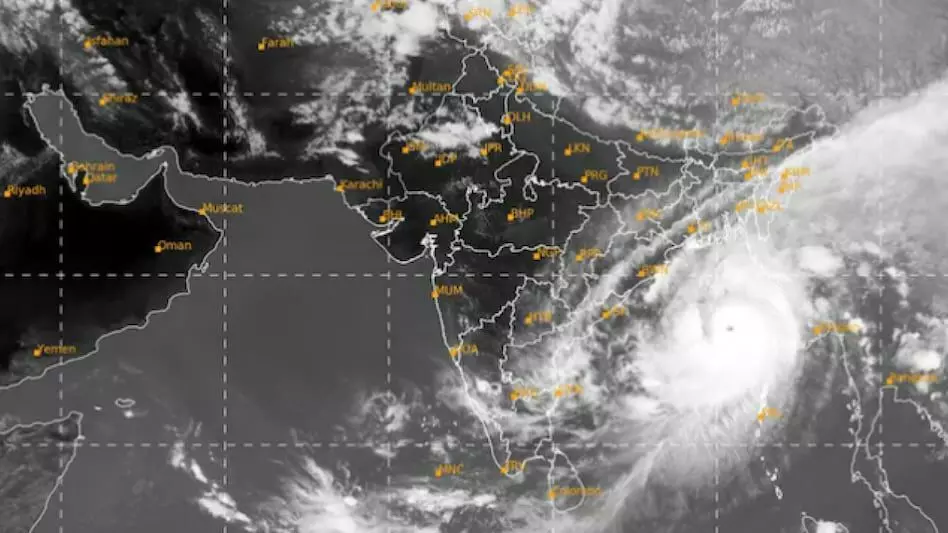Here’s how India Meteorological Department progressed in weather forecasting from 1875
Flood meteorological services gained importance, and the IMD actively contributed to dam safety measures and flood management.
By Anoushka Caroline Williams
Representational Image.
Hyderabad: The India Meteorological Department (IMD) stands as the cornerstone of weather and climate services for the Government of India. With its headquarters at Mausam Bhawan, Lodhi Road in New Delhi, the IMD has evolved significantly since its inception in 1875.
Historical Context
The roots of meteorology in India trace back to ancient texts like Vedas and mythological epics, reflecting the early recognition of the importance of weather and climate. However, it was in 1875 that the IMD officially came into existence, founded by HF Blanford, marking a crucial moment in the history of meteorological sciences in India.
Nascent age (1875-1890)
During its formative years, the IMD focused on integrating meteorological observations, standardising methods, and exchanging data globally. The establishment of the first seismological observatory in Kolkata in 1877 and advancements like telegraphic weather codes and express telegrams marked this period.
Growth before Independence (1891-1946)
The late 19th century witnessed significant milestones, including the preparation of the first chart in 1877 and the first daily weather report in 1878. World War I and II accelerated the need for upper atmosphere observations, climatology development, and advancements in communication technology.
Commencement of Radar Age and Flood Met. Services (1947-1959)
Post-independence, the IMD embraced radar technology, marking a quantum leap in observational infrastructure. Flood meteorological services gained importance, and the IMD actively contributed to dam safety measures and flood management.
Commencement of Global Satellite Era (1960-1970)
The launch of the TIROS-1 satellite in 1960 ushered in the global satellite era. IMD started utilising satellite imagery for cyclone monitoring, weather analysis, and improved forecasting. The period also witnessed advancements in numerical weather prediction, aviation services, and international collaborations.
Global monitoring and better forecasting (1971-1983)
Natural disasters like the Bhola cyclone in 1970 emphasised the need for improved cyclone warning systems. The 1970s saw the establishment of cyclone warning centres, ensuring timely warnings for coastal states. Satellite and telecommunication advancements further enhanced forecasting capabilities.
Indian Satellite Era (1984-1990)
Regular reception of satellite images from Indian satellites began in 1984. The period saw advancements in environmental monitoring, satellite-based forecast products, and the establishment of the National Centre for Medium-Range Weather Forecasting.
Commencement of automatic observations (1991-2005)
The early 2000s witnessed the launch of the first dedicated meteorological satellite, Kalpana, in 2002. Automated weather stations and aerosol optical depth monitoring were introduced, emphasising the integration of land-ocean-atmosphere interactions.
Age of modernisation of IMD (2006-2013)
Under the Ministry of Earth Sciences, IMD embarked on a modernisation program from 2007 to 2012. The transition to digital platforms, improved forecast models, and expanded services, including aviation meteorological briefing systems, marked this era.
Rapid advancement and paradigm shift (2014-2023)
The IMD witnessed remarkable progress in meteorological observations, communication, modelling, and infrastructure. The integration of Doppler weather radars, dedicated weather satellites, automated weather stations, and advanced forecasting models significantly improved accuracy and lead time.
IMD’s impact and reach
The IMD’s extensive network and modernisation efforts have led to a substantial increase in forecasting accuracy, benefiting various sectors like agriculture, aviation, shipping, and health. Impact-based forecasting and dynamic risk assessment have positioned IMD as a global leader in tropical cyclone monitoring.
From its humble beginnings in 1875, the IMD has evolved into a dynamic institution, adapting to technological advancements and contributing significantly to India’s weather resilience. As the IMD continues its journey, the emphasis on precision, integration, and innovation remains steadfast, ensuring a weather-ready and climate-smart nation.